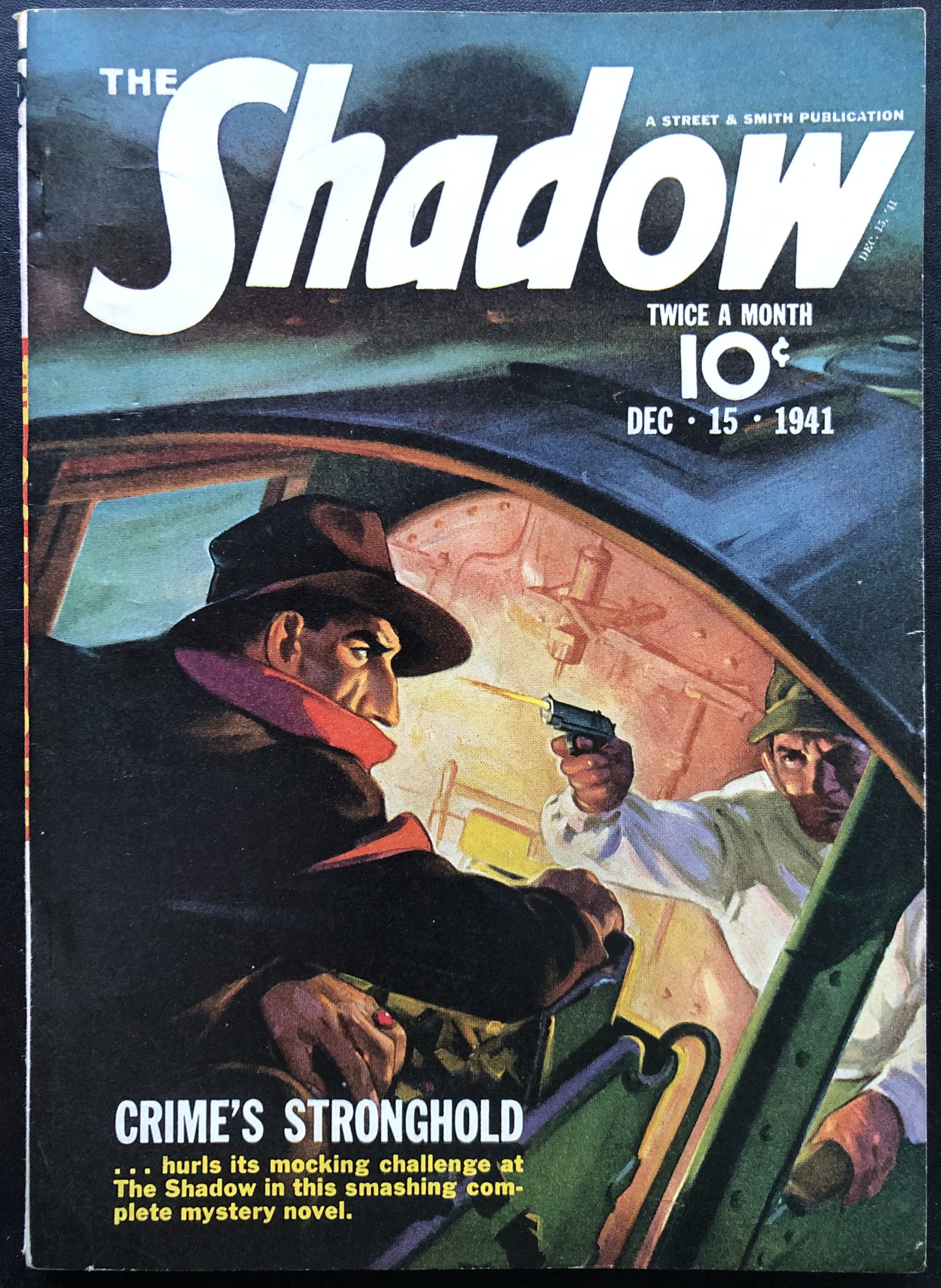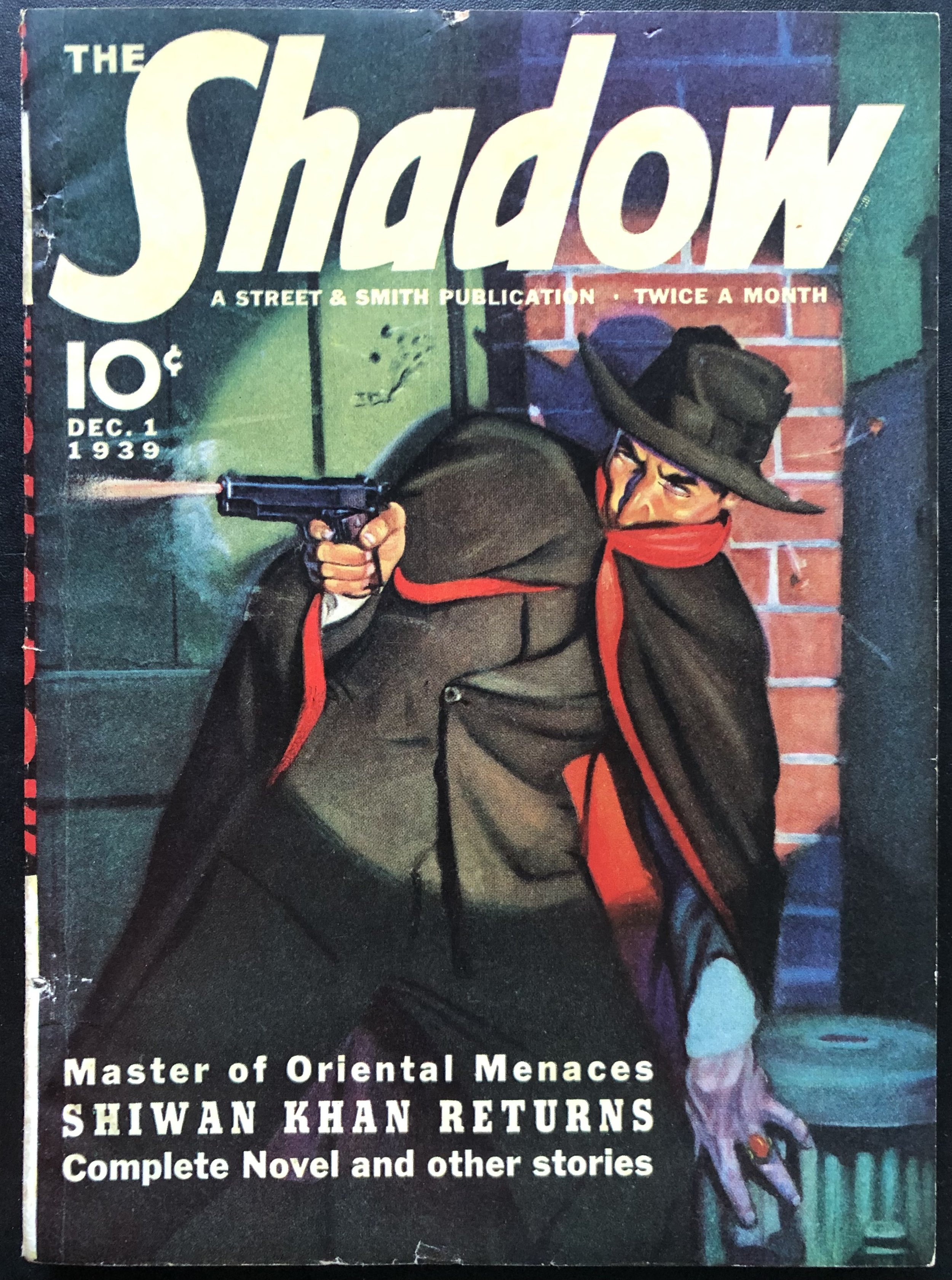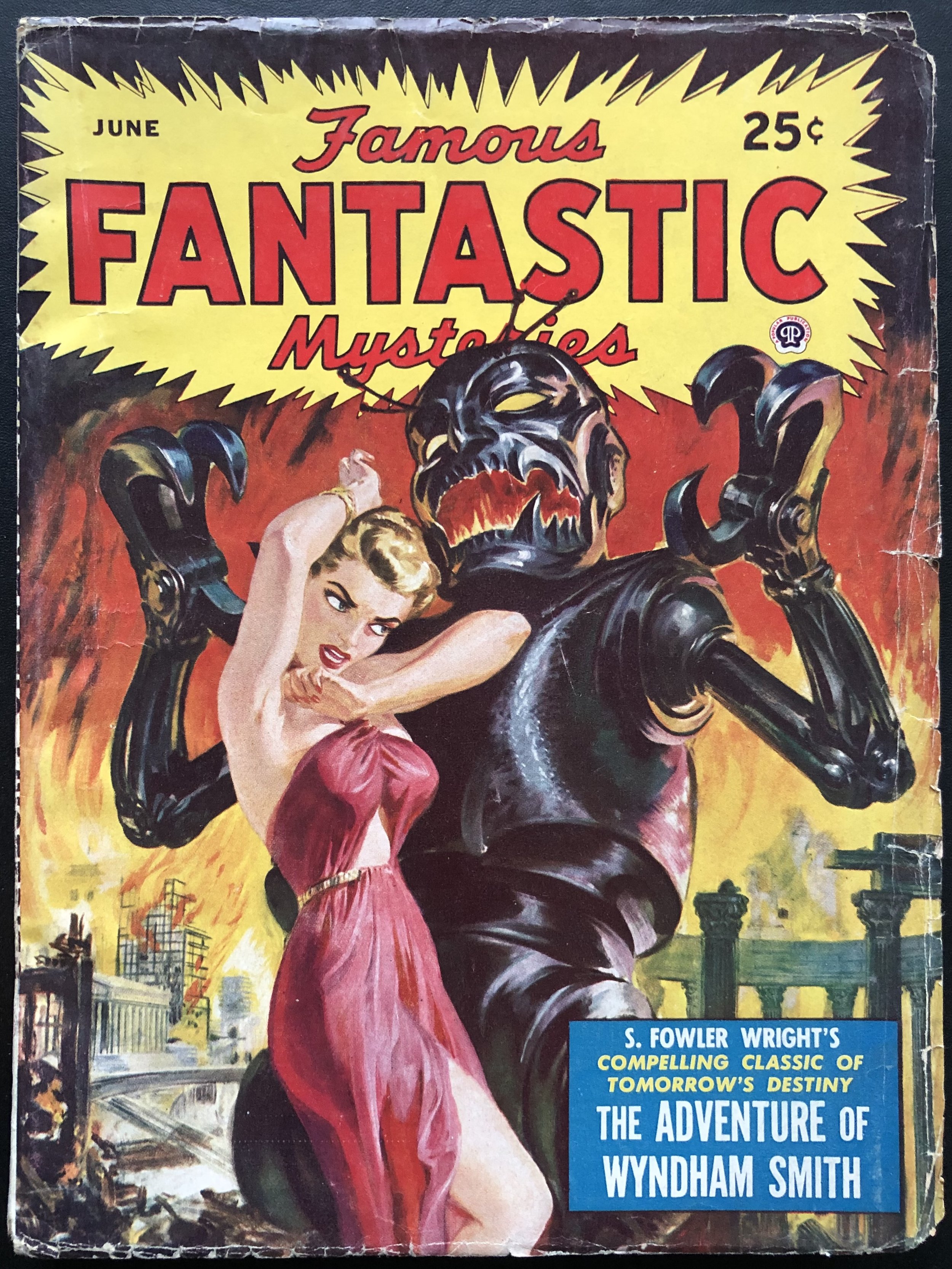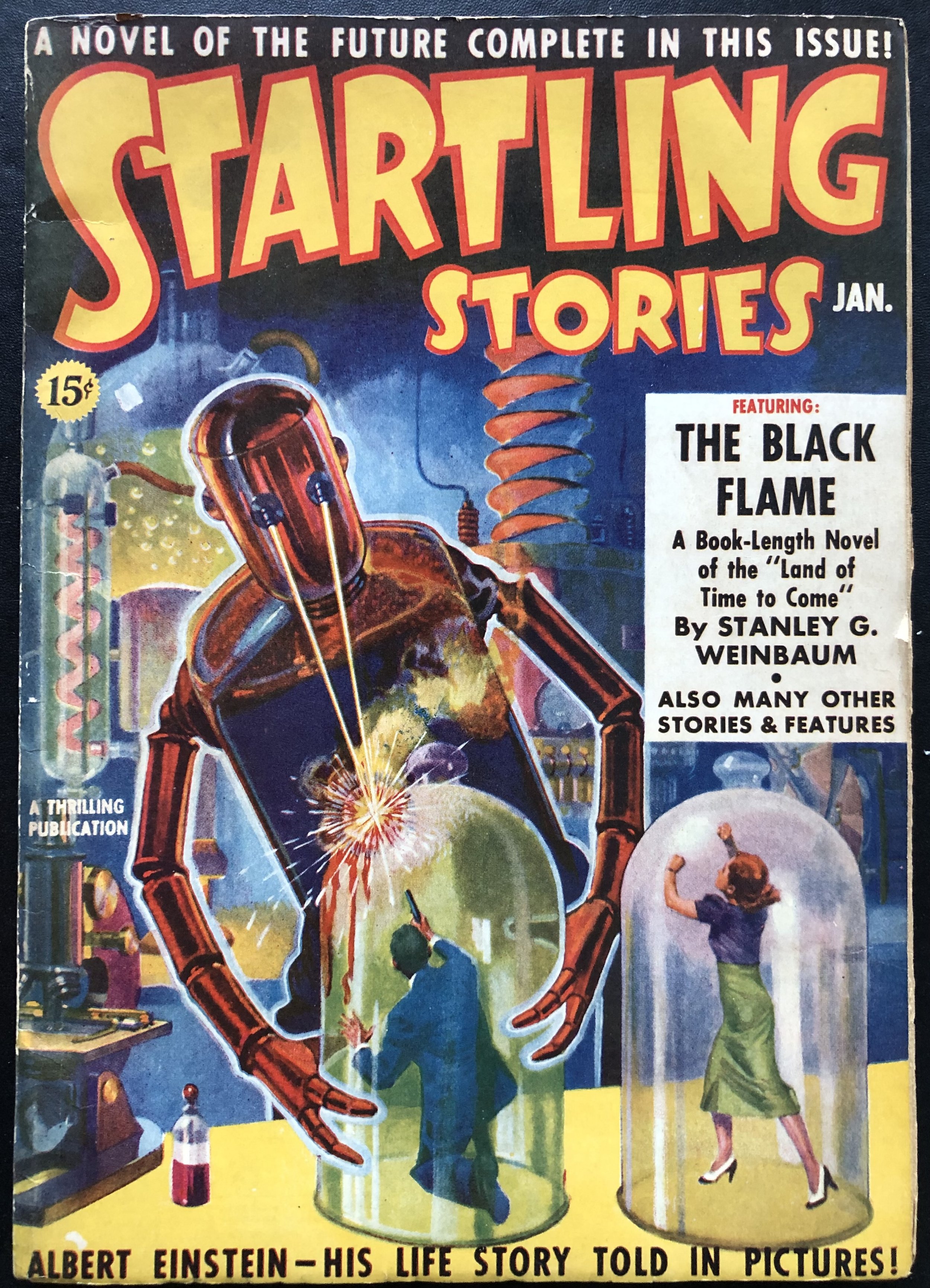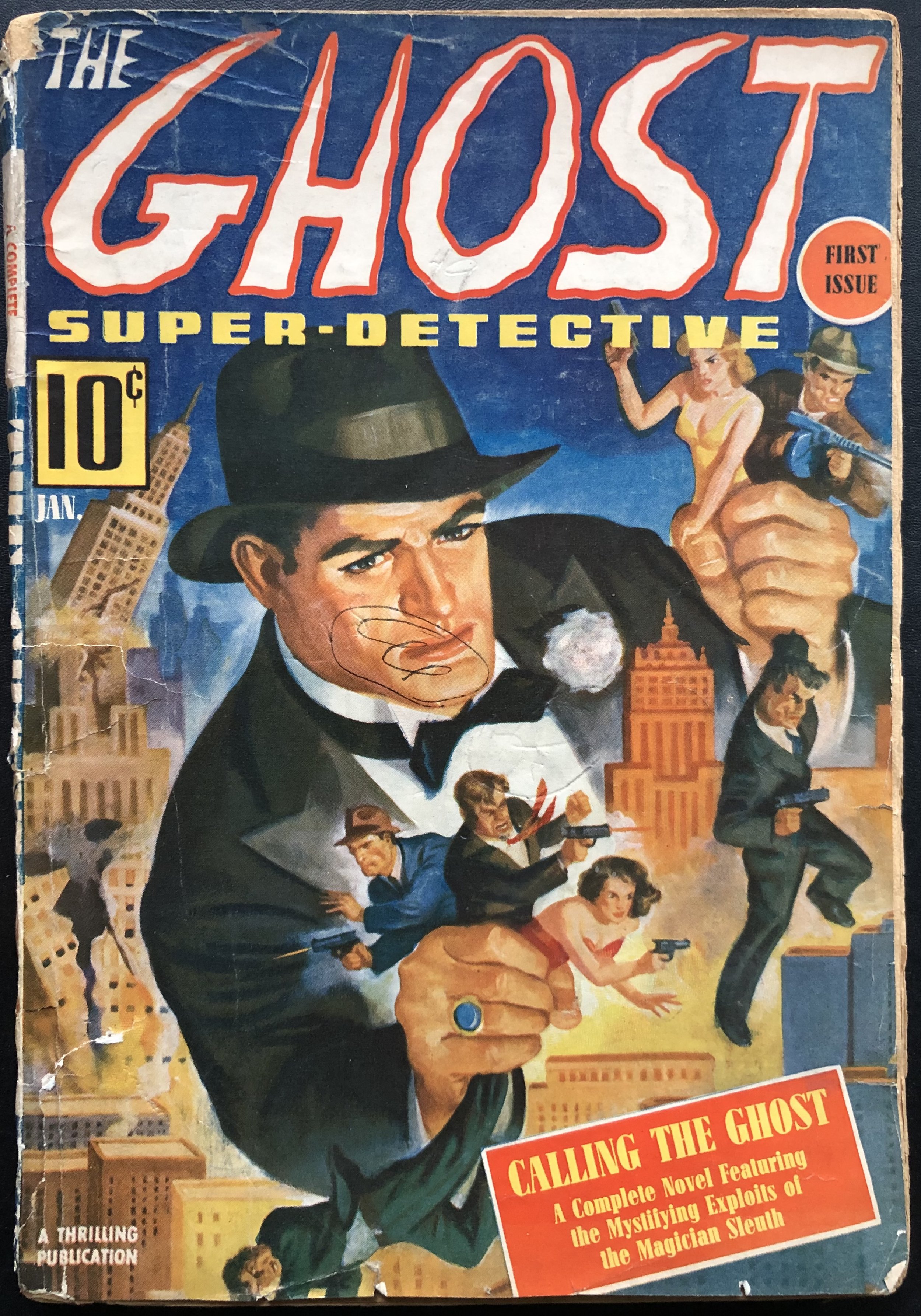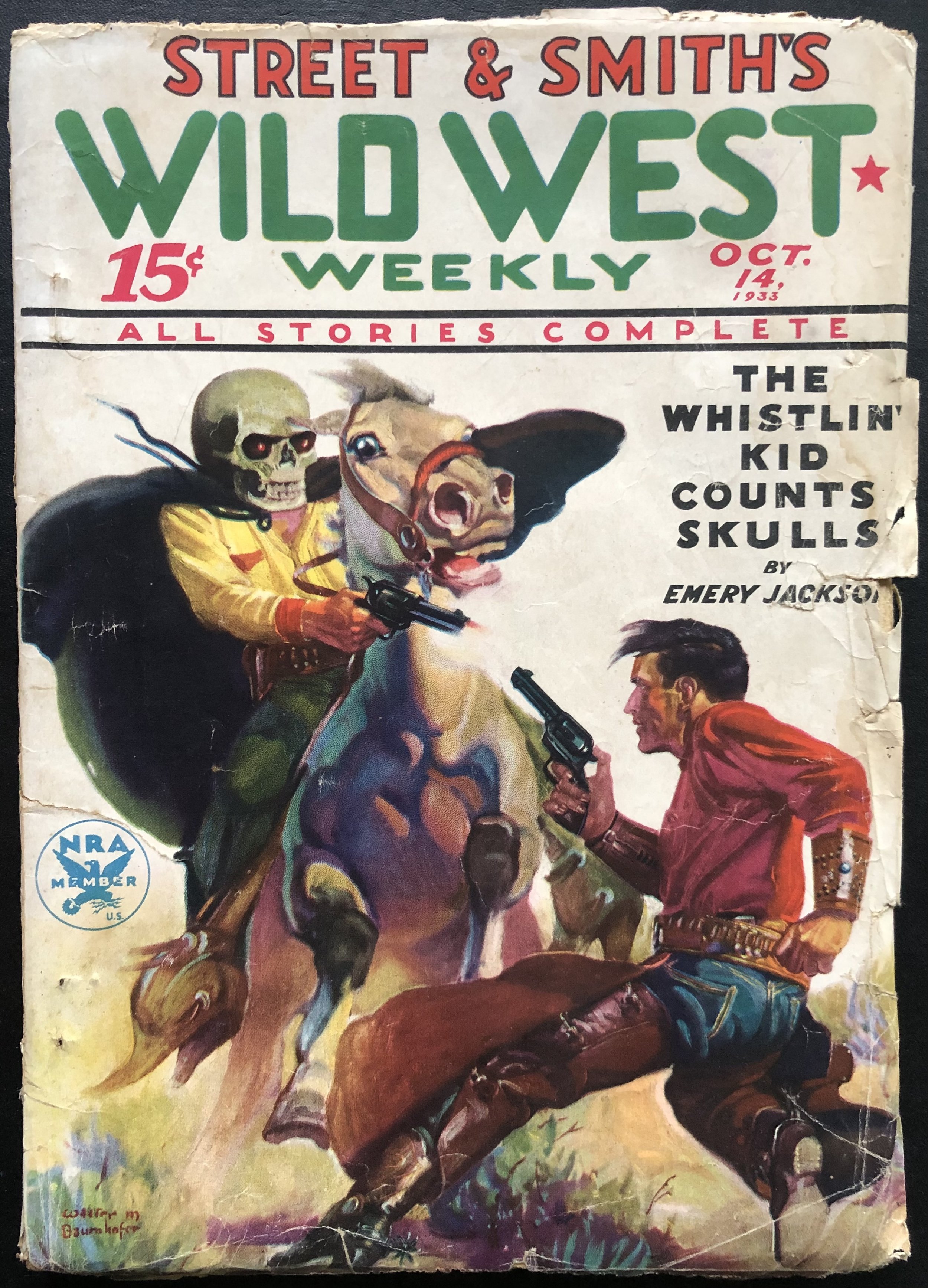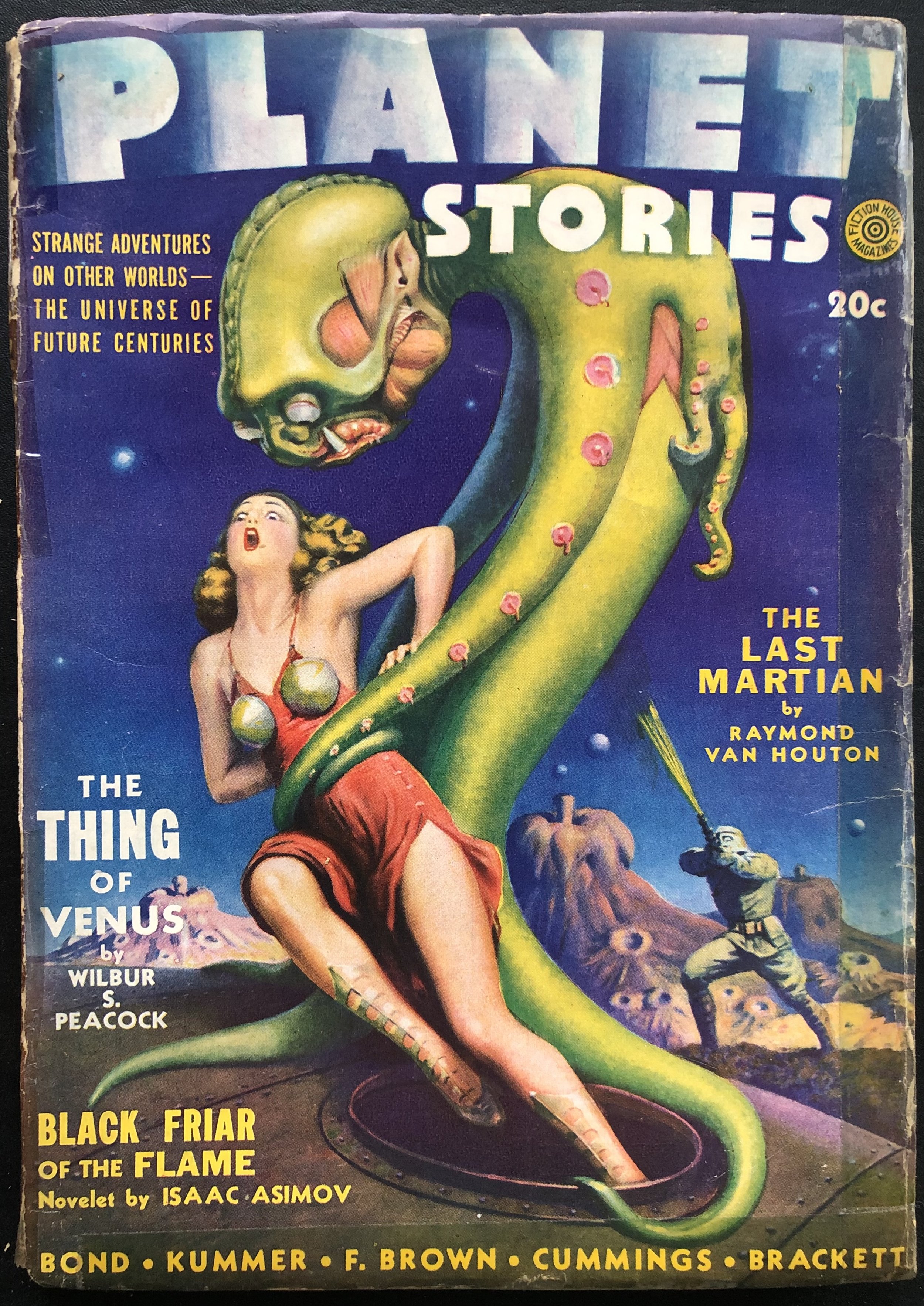PULP MAGAZINE GRADING
When grading any collectable, you are classifying how far it has fallen from it’s original manufactured state. The point of grading is to be able to better communicate this state. Having defined terms to communicate an accurate reflection of a collectable’s state of existence should be the goal of this language.
CGC began to grade and encapsulate pulp magazines in 2024. Their way of grading pulps is different than how pulps where previously graded. There is the “old school” definition as outlined in the book, Bookery’s Guide To Pulps. Now there is the “new school” definition as prescribed by CGC.
CGC stated, “With a few exceptions, CGC’s grading standards for pulps mirrors its standards for comic books.” (Source)
I have gathered as much information as I can, including asking Matt Nelson (President of CGC) specific questions on how grading pulps is different than grading comics. I am not endorsing or adopting their grading standard. Instead, I am outlining how I will grade raw pulps, (pulps not graded & encapsulated by a grading service).
I have decided to grade by range, starting at Very Fine and descending to Poor. I will employ the + or - grade for pulps that stand out as being higher or lower within the grade range. I will no longer use in-between range grades such as Very Good /Fine.
I can not guarantee that CGC will give out the same grade as I. I will disclose any restorations when listing a pulp for sale. If I miss a restoration, you are free to return your pulp for a full discount plus the grading fee if you had the pulp graded.
Below these definitions you can find my Q&A with Matt Nelson. I feel it is important that you are an informed collector when dealing with raw or 3rd party graded pulps. This information is not on CGC’s website at the time of this writing.
VERY FINE
For grading raw pulps with overhang, the Very Fine range is about as good as it gets. A Very Fine pulp should look youthful, bright, sturdy and hardly any condition impacts by man and the environment. Flaws would be limited to the overhang. Small overhang tears, creases and very small chips. Very minor signs of handling under rake light. Due to the nature of overhang and acidity in pulps, a certain amount of forgiveness should be given. But, that forgiveness should be earned by other positive attributes. Even less forgiveness should be given to factory trimmed pulps.
Very Fine should catch the eye of any pulp collector as being special. The pulp should command reverence. Pages must be creamy and supple. Very Fine pulps are easier to handle than a lower grade pulp due to their near complete lack of decay and fragility. Yet, you may be nervous to do so because adding even slight wear may stand out due to the lack of flaws. It is as if the pulp is in ideal condition but was unfortunately born as a pulp. There should be no trimming, tape, glue, etc. If it was in Very Fine condition, it would not warrant trimming.*
Look at the Famous Fantastic Mysteries below. Most of the flaws are limited to the overhang. Other cover flaws only stand out with rake light. It looks like it has hardly been handled. If one was flipping through a stack of pulps and came across this one, it would command reverence. Assuming that the rest of the pulp is in the same shape as the cover. (This pulp happens to be a File Copy).
In the example of The Shadow, this issue is factory trimmed. It has a very small nick on the bottom of the spine. Very small tear on the right side above the gunman’s head. Some staple dents that show glare under rake light but are not breaking color (It doesn’t show in the picture but, there is a bottom staple dent like the one on the top (The rake light is less offending in the image). Trimmed pulps are far more likely to grade higher than pulps with overhang. Assuming the rest of this Shadow pulp is like the front cover, I would grade it Very Fine.
*CGC will give a pulp Very Fine Minus (7.5) if one side of a front or back cover is trimmed yet the rest of the pulp will factor into them giving that grade.
FINE
A pulp in Fine condition, should still be viewed with reverence but, with less forgiveness than Very Fine. It should retain it’s beauty and structural integrity. This pulp should look like it has aged very well with minor signs of aging such as minor foxing or oxidization. It is allowed to have more flaws than Very Fine or one or two that go slightly beyond the overhang without much distraction to the beauty of the pulp but this predisposes the grade to get Fine Minus. There can be isolated cover creases that show without rake light. It should not have that, “broken in by a reader” look to it but it can look read. A small spine split may exist if the rest of the pulp has some great things going for it. No tape unless very small, clear & on the inside of the cover. However, this would likely be pushing it and garner a Fine Minus if the rest of the pulp was very sharp. I do not think any overhang trimming should be permitted at Fine.* It should be easy to handle without fear of harming it. Pages may not be their original white but should be creamy or only slightly yellowed.
*CGC will allow a pulp with one side of a cover to be trimmed up to Very Fine Minus and a pulp with three side of the overhang to go as high as Very Good / Fine (As long as the rest of the pulp’s condition justifies grading standards).
In the pictures below, you can see that there are a few small flaws but not too many for them to loose their beauty and reverence. Flat, clean and bright.
The Planet Stories has several small specs of color loss (Creature’s belly). Minor edge wear that breaks color. “F” in green ink on the title. It is hard to see in the picture but the spine overhang at the top of the spine is gone yet does not impact the pages of the spine. The pulp feels strong when handling it outside of the bag.
The Shadow issue is trimmed. Minor edge wear and some damage from proud staples. Clean, bright and flat.
VERY GOOD
A pulp in Very Good condition would feel read and handled often yet well cared for. When someone says, “Looks good for it’s age.” My mind sees a pulp in Very Good Condition. It is a collectable grade but without the reverence commanded by a pulp in Fine condition. The overhang may have several tears, creases small chips. The covers can have some long creases that break color but not if the creases jeopardize the strength of the pulp. In a way, a Very Good pulp is great for those who both collect and read their pulps. Slight wear from reading it would not likely alter it’s grade but it is nice enough to be desirable in a collection. There can be limited clear tape on the spine / covers. Slight trimming.* More tape is permitted if it is on the inside of a cover. If you see tape, look close to discover why the tape was applied in the first place. Whatever underlying flaw exists must be factored into the grade. Store stamps, small to medium chips and tears can exist but not in excess.
*For CGC, If a pulp is already in Very Good condition, trimming will likely have no effect.
In the below examples, I would give the Famous Fantastic Mysteries, Very Good Plus. The majority of it’s flaws are limited to the overhang with some tears and creases creeping in further than the overhang. There are no chips greater than the overhang but there are overhang corner chips.
The Spicy Adventure would be Very Good. There are several creases that go beyond the overhang. There is a spine split at the bottom that is just over 1”. There is some sort of discoloration on the woman’s arm (color foxing).
The Startling Stories pulp is trimmed on all three sides yet the rest of the pulp is nice. It is possible that CGC might grade this one higher than Very Good.
The Black Mask issue below looks to me like Very Good Minus. It is actually well intact and easy to handle without being overly cautious. However, there are a lot of creases. There is also color fading on the right edge.
GOOD
A pulp in Good condition will begin to loose desirability. The pulp will be weak but intact or have many small to medium flaws. Moisture stains, tanning, flaking, full pulp trim, excessive tape etc. Once again, always look for why tape was used in the first place. A cover that is detached (Fair Condition) can not be bumped up to Good condition by taping it back on.
In the example below showing The Ghost, you can see that all edges of the cover are trimmed deeper than the pages. There are also several creases, small chips and a tear on the bottom left corner that is about 3” long. For these reasons, I would grade it in the Good range.
The Wild West Weekly issue shown below has edge wear and tear but the big issue with this one is a long spine split going just over half way down and then cutting in, just over the NRA symbol. Everything is present and accounted for but not well intact.
The Magic Carpet issue has tape residue that significantly effects the aesthetic of the pulp. The pulp is actually well intact but it’s beauty is significantly changed.
In the case of the Planet Stories, there is excessive tape on the right and bottom edge. There is also tape on the upper part of the spine to support a spine split.
FAIR -
Pulps in Fair condition usually have a defect issue. Detached cover, bad water damage, significant spine chipping, detached pages & brittle etc. If you can’t even handle the pulp because it has too much of the above, just call it Poor.
As you can see, the Dime Mystery issue is deeply damaged with just about every combination of problems i.e. chips, tape, tears, creases, color fading etc. All in abundance. The issue of The Spider has a detached front cover. In a way, the Spider issue could be in better shape. The Dime Mystery has several pieces of clear tape on the spine to reattach the cover.
Poor
Missing a cover(s) / spine etc. This is the lowest grade. You know it when you see it.
Below is a Spicy Mystery Stories with a photocopy front cover. The photocopy does not improve the grade, it just makes you know which issue it is and it gives you something better to look at than no cover.
It is not clear in the image of The Black Mask pulp but, this pulp has no spine or back cover. When I received this pulp, there was a dealer’s sticker on the back of the bag stating it was in Fair condition.
INTERVIEW WITH CGC PRESIDENT, MATT NELSON
Q: How do you factor overhang chips, tears, bends and creases? It seems to me that they are graded less harshly than comic book edge chips, tears, bends and creases but, by how much? What are the rules to grading overhang flaws?
A: This first question will be impossible to answer concisely because of the infinite combination of creases, tears, and chips. It is usually the reason pulps don’t grade higher than 8.0 or 8.5. If the rest of the pulp is in beautiful condition, but the overhang has a few very small tears, a couple of small creases, or a chip or two out, it will cut off in the 8.0 – 9.0 range. If the pulp looks great but the overhang is worn (but mostly present), this can drop it down as far as 6.0.
Q: What are the rules to grade trimming? The only data I have is that trimming gets a blue label as opposed to purple. I can’t find any rules on how to systematically grade trimmed pulps.
A: Books can get downgraded for trimming, depending on the severity of trimming and the grade otherwise. A pulp can get up to a 7.0 with only 1 edge of the front/back cover trimmed, but if the entire book is trimmed on all three edges, the highest grade is around a 5.0. This is assuming the rest of the pulp is in nice shape. If it’s already a 4.0, the trimming will likely have no effect. Same on the high end…if the pulp is only a 6.0 with one edge of the cover trimmed, the trimming will have no effect on the grade. All three edges of a cover trimmed (but not the interior) maxes at around a 6.0.
Q: Is there a cap on the grade of a pulp with trimming?
A: Edge of front or back cover = 7.5 (again, also factoring in the rest of the grade of the pulp)
Q: Are there any rule sets to grade pulp spines that differ from grading comic spines?
A: Pulps are in a class by themselves here, because 99% of the comics with similar spines (squarebounds) do not exhibit any fading, because they were not stored on bookshelves like pulps. So pulp spine fading is somewhat unique to pulp grading. And like trimming, the severity of fading is graded in conjunction with the grade otherwise. A heavily faded spine on an otherwise high grade pulp will max out at around a 6.0. A moderately faded spine may bring it down into the 7.0 – 7.5 range. Light fade usually doesn’t have any impact because most pulps max out at 8.0 or 8.5.
Q: In the CGC pulp press release, it says, “Most pulps average between 2.0 and 4.0 in grade, with 6.0 considered a high grade, and 8.0 or higher regarded as exceptional.” Would this put mid-grade for a pulp with overhang at 4.0?
A: I would probably say 5.0 to 6.0 would be mid-grade.
COMPLAINT DEPARTMENT:
If there are any points made in my grading descriptions that you disagree with or want clarification on, please know that your communication is always welcome. After all, I am only trying to increase a universal understanding.



